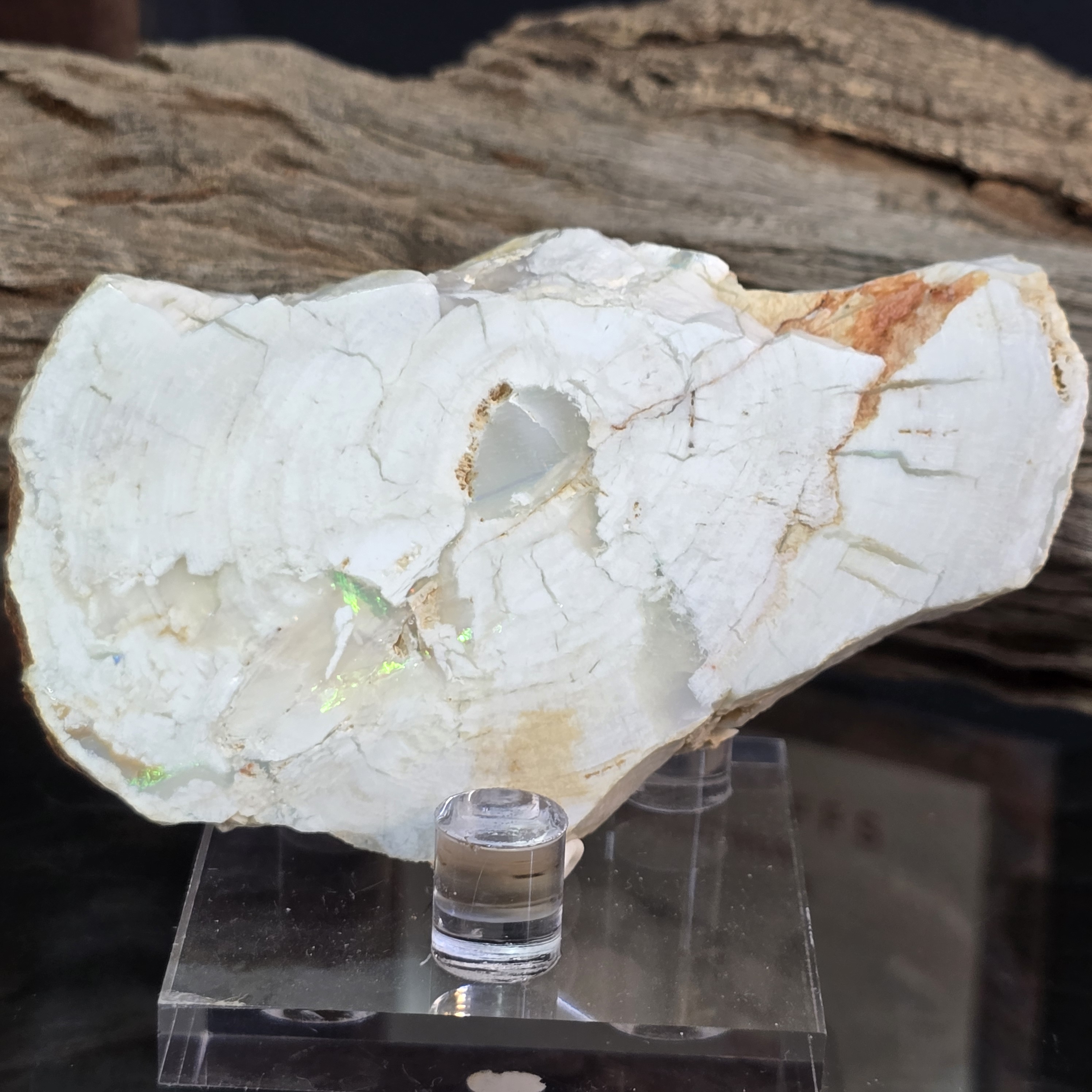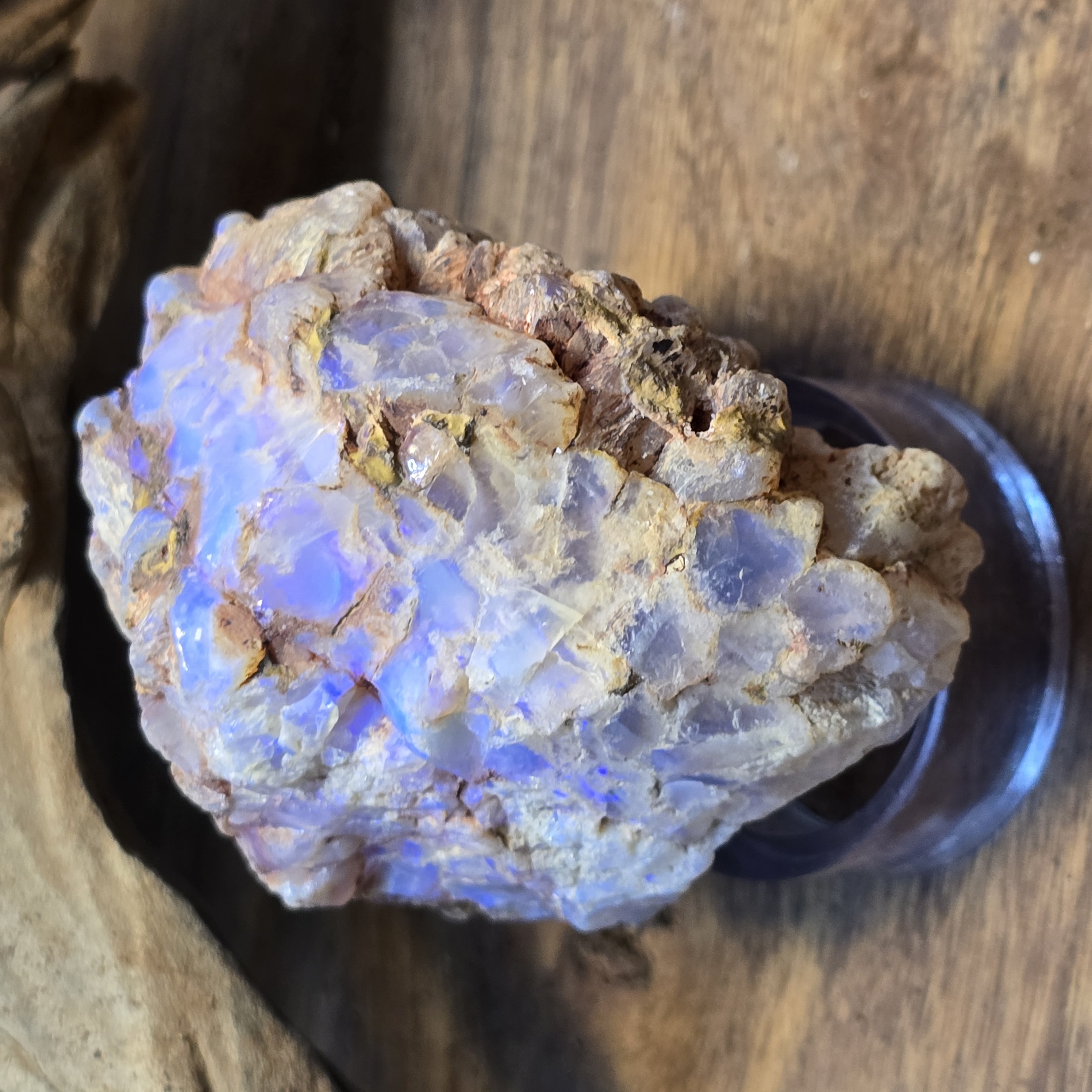White Cliffs
Located in the remote outback of New South Wales, White Cliffs holds a significant place in Australia’s opal mining history. Since its discovery in the late 19th century, the area has become renowned for producing rare and valuable opals, contributing to Australia’s global reputation as a leading source of the gemstone.

Brief History of Mining in White Cliffs
Opal mining began in White Cliffs in the 1880s, making it the site of Australia’s first commercial opal field. Early miners, drawn by the promise of this newly discovered gemstone, worked in extreme outback conditions with limited infrastructure. In response to the region’s harsh climate, many miners created underground dwellings near their claims — a unique solution to the oppressive summer heat. The mining techniques developed during this period were largely manual and labor-intensive, with shafts and tunnels hand-dug in search of opal seams. Over time, White Cliffs evolved into a tight-knit mining community built around perseverance and resourcefulness.
Types of White Cliffs Opals

White Cliffs is particularly noted for its production of white opal, also known as milky opal, which features a light body tone with striking internal color play. These opals often display vivid flashes of red, green, and blue and are considered highly desirable for their brightness and translucence. Another hallmark of the area is opalised fossils — remnants of ancient marine life that have, over millions of years, been replaced by opal. These specimens not only hold gemological value but are also of scientific importance, revealing details about the prehistoric environment of inland Australia.
Famous Finds from White Cliffs
Among the significant discoveries in White Cliffs is the Pineapple Opal, a one-of-a-kind pseudomorph that resembles a crystalline pineapple in shape and texture. This opal formation is exceptionally rare and has become an iconic specimen within the mineralogical community. In addition to the Pineapple Opal, White Cliffs has yielded a range of well-preserved opalised fossils, such as mollusks and sea shells, which offer both aesthetic appeal and paleontological insight. These finds highlight the geological uniqueness of the region and underscore its continued importance in opal research and collection.
